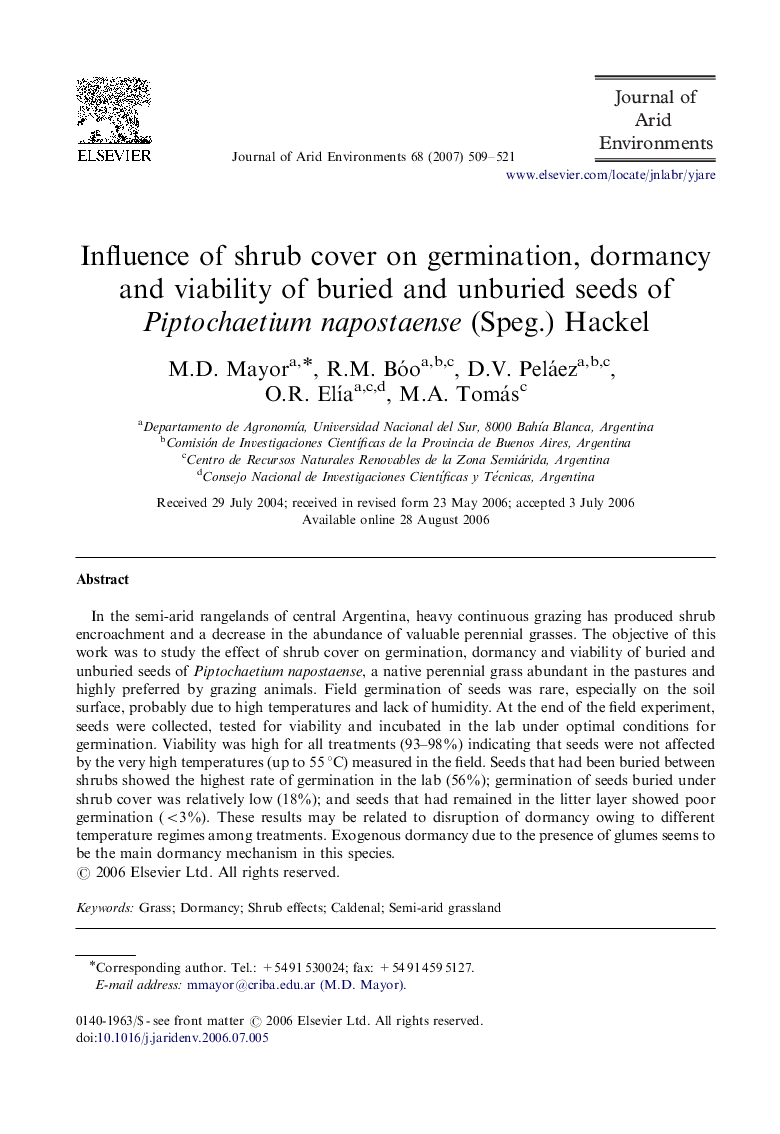| Article ID | Journal | Published Year | Pages | File Type |
|---|---|---|---|---|
| 4394662 | Journal of Arid Environments | 2007 | 13 Pages |
In the semi-arid rangelands of central Argentina, heavy continuous grazing has produced shrub encroachment and a decrease in the abundance of valuable perennial grasses. The objective of this work was to study the effect of shrub cover on germination, dormancy and viability of buried and unburied seeds of Piptochaetium napostaense, a native perennial grass abundant in the pastures and highly preferred by grazing animals. Field germination of seeds was rare, especially on the soil surface, probably due to high temperatures and lack of humidity. At the end of the field experiment, seeds were collected, tested for viability and incubated in the lab under optimal conditions for germination. Viability was high for all treatments (93–98%) indicating that seeds were not affected by the very high temperatures (up to 55 °C) measured in the field. Seeds that had been buried between shrubs showed the highest rate of germination in the lab (56%); germination of seeds buried under shrub cover was relatively low (18%); and seeds that had remained in the litter layer showed poor germination (<3%). These results may be related to disruption of dormancy owing to different temperature regimes among treatments. Exogenous dormancy due to the presence of glumes seems to be the main dormancy mechanism in this species.
